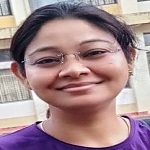
Title: A Numerical Approach for the Simulations of ZnO/Ag − H2O Nanofluids Flow with Viscous Dissipation Past a Stretching Sheet
Speaker
Dr. Mittu Walia
Indian Institute of Technology Roorkee
India
Abstract
This research's main objective is to study the nano-fluid flow under convective conditions over a stretching sheet with the effects of viscous dissipation and the magnetic field. MHD nano-fluids flow field over a stretched surfaceoccurs with equal and oppositeforces acting at the origin on the x-axis, possessing a class of solutions. The governing model includes energy equations besidesthe incompressible Navier-Stokes equations. Numerical simulations for fluid flows and temperature fields for two different nano-fluids taking zinc oxide and silver as nano-particles with water as a base fluid, are performedthrough the Runge-Kutta scheme in Matlab.A comparative analysisis presented by considering velocity profiles, shear stress, and temperature gradients. Properties of the solution profiles are also notified for the flow field past a non-linear stretching surface. The velocity field and the heat transfer factors for nano-fluids are analyzed and examined for distinct volume fractions of nano-particles, Hartmann, and Hartee numbers. Enhancement of velocity profiles is perceived for ascending values of nano-particle concentrations, whereas decelerated flows are observed due to combined effects of stretched boundaries and Hartmann number. The temperature field shows decimating values with the growing Prandtl number.
Biography
Will be updated soon!
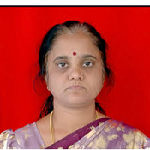
Title: Computation of Couple Stress Electro Conductive Polymer from an Exponentially Stretching Sheet
Keynote Speaker
Prof. J.C. Umavathi
Gulbarga University
India
Abstract
Magnetic polymer processing involves multiple physical phenomena and requires simultaneous consideration of rheological, hydromagnetic and thermal characteristics. Inspired by new developments in functional magnetic coating dynamics, the present article investigates the viscous magnetohydrodynamic non-Newtonian boundary layer flow of an incompressible, electrically conducting, polar (couple stress) electroconductive polymer from an exponentially stretching sheet. Owing to slippery motion at the substrate, a slip velocity is included. A secondary flow is induced with the presence of a Hall current. Ohmic and viscous dissipations are also incorporated in the mathematical formulation. The nonlinear boundary value problem is solved numerically by adopting shooting technique and bvp4c algorithm available in MATLAB software. Validation with the Adams-Moulton 2-step predictor corrector algorithm is included. The effects of non-Newtonian couple stress parameter, magnetic interaction number, mixed convection parameter, slip parameter, Prandtl and Eckert number on the primary and secondary velocities and temperature fields are visualized graphically Greater hydrodynamic slip effect initially boosts the primary velocity near the wall but thereafter induces a decrement in it. However, a consistent improvement in secondary velocity is computed for greater slip parameter. Increasing Hall parameter strongly accelerates the secondary flow but only weakly accelerates the primary flow. Increasing magnetic interaction number decelerates the primary flow although back flow is never induced; secondary flow is however very significantly decelerated with greater magnetic interaction number i. e. stronger transverse magnetic field, and significant backflow is mobilized in the boundary layer regime. Elevation in mixed convection parameter notably accelerates and stabilizes the secondary flow and also generates significant primary flow acceleration. Higher values of Hall parameter initially accelerate the primary flow near the substrate (wall) whereas deeper into the boundary layer transverse to the wall they induce a reduction into the free stream. Secondary flow is however consistently decelerated throughout the boundary layer with stronger Hall parameters. With elevating magnetic number promotes the thermal boundary layer thickness and also the temperature. Couple stress effects generally accelerate both the primary and secondary flow.
Biography
J.C. Umavathi completed her Post Doctral from the Department of Engineering, University of Sannio, Piazza Roma 21, 82100 Benevento, Italy. She is working as Professor in the Department of mathematics, Gulbarga University since 1993. She has published more than 215 research articles in reputed international journals. She is a recipient of Kalpana Chawla Young Scientist award, Sir J.C. Bose award and Erasmus Mundus Fellowship.

Title: Deflated and recycled block Krylov subspace methods for solving sequences of linear systems with multiple right-hand sides
Keynote Speaker
Dr. Bruno Carpentieri
Free University of Bozen-Bolzano, Italy
Abstract
The solution of large linear systems with multiple right-hand sides given simultaneously is required in many large-scale scientific and engineering applications modelled by either partial differential or boundary integral equations. Block Krylov subspace methods are attractive to use for this problem class as they can overcome the memory bottleneck of direct methods and they performblock matrix-vector products,achieving high computational efficiency on modern cache-based computer architectures. In this paper we introduce variants of the block GMRES method that combine initial deflation and eigenvalue recycling strategies to remedy some typical convergence problems of block Krylov solvers. The new class of block iterative solvers has the ability to handle the approximate linear dependence of the block of right-hand sides and exploits approximate invariant subspaces recycled over the iterations to mitigate the bad effects that smalleigenvalues can have on the convergence, by adapting an existing preconditioner. We illustrate the numericalbehavior of the spectrally updated and initiallydeflated block GMRES method on a set of linear systems arising from the discretization of the Dirac equation and of boundary integral equations in electromagnetics scattering, and we discuss its efficient implementation on modernGPU computers.
Biography
Dr. Bruno Carpentieri has completed his Ph.D. in Computer Science from the Institut National Polytechnique de Toulouse, France, and postdoctoral studies from the University of Graz and CRS4 Sardinia. He served as an Assistant Professor at the University of Groningen and as a Reader in Applied Mathematics at Nottingham Trent University. Since May 2017 he is an Associate Professor in Applied Mathematics at the Faculty of Computer Science, Free University of Bozen-Bolzano. He has published about 50 papers in reputed journals and has been serving as a member of the scientific advisory board of several conference panels in computational mathematics and high-performance scientific computing.

Title: Money is Time. Substantiation
Plenary Speaker
Dr. Oleg Kurbanov
The Algebra of Economics
Russia
Abstract
Will be updated soon!
Biography
Dr. Oleg Kurbanov is a student of CPI in 1983-1985. Army ( 1989-1990). student of CPI ( 1990-1993 ). He is an entrepreneur from 1996-2022. seminar at the Academy of Sciences of Kazakhstan in February 2023. seminar at the Kyrgyz National University 14.02.2023. seminar at the Institute of Physics of the National Academy of Sciences of the Kyrgyz 15.03.2023.
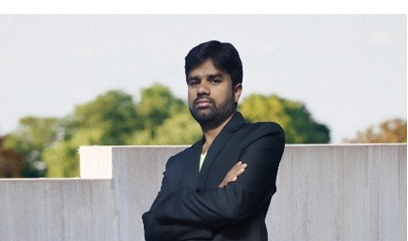
Title: 2022-MainStreaming Super-Efficient Appliances in India
Speaker
Mr. Venkat katta
Atpole Technologies Pvt Ltd
India
Abstract
The appliance and consumer electronics market in India was pegged at INR 2550 billion in 2019 and is projected to grow to INR 3150 billion in 2022 (PwC, 2019). This growth in appliance ownership, while improving the quality of life and standard of living for a growing and aspirational Indian middle class, will significantly increase energy demand. By how much is a crucial question?
In mainstreaming super-efficient technologies as well as their recommendations to transform the market for energy-efficient appliances are presented in this report. The concluding section Suggests pathways to mainstream super-efficient appliances.
The objective of this study is to research the most energy-efficient product models among ceiling fans, mixer grinder, washing machines, refrigerators and TVs in Indian and global markets, identify technologies that differentiate the most energy-efficient models from the rest and suggest pathways for mainstreaming these super-efficient technologies
Biography
Mr. Venkat katta is a highly accomplished individual with a strong background in engineering and a keen entrepreneurial spirit. Pioneer in Disruptive Innovation for BLDC/PMSM Motors & Controllers with extensive experience in R&D Automotive Electronics, Defence Products, Power Electronics and Embedded Technologies in different applications. Having gained extensive experience working in research and development roles at esteemed firms such as DRDO, TVS Motors, and L&T, he has honed his skills in a range of critical areas. As the Founder of TeslaEMS, TEMSRAX and Co-Founder ARCMACH, ATPOLE, he has further leveraged his expertise in Brushless DC motors to develop innovative solutions across a wide range of industries, including robotic motors, unmanned solutions, automobiles, drones, and agriculture. His exceptional contributions to the field have been recognized by The Indian Achievers Award, which acknowledged his achievements as a promising startup founder during the 2020-2021 period. Mr. Katta's unwavering dedication to engineering excellence and entrepreneurship make him a formidable force in the industry, and a true inspiration to others in the field.
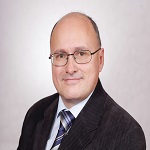
Title: Stability and Reactivity of Adhesive Amine Resins used in Woodworking Industry
Plenary Speaker
Dr. Tomasz Krystofiak
Poznan University of Life Sciences
Poland
Abstract
Based on many years of own research on amino adhesive resins used in the woodworking industry, trends in the development of bonding agents were showed. Stability and reactivity of the two-component resins were presented. Properties of urea-formaldehyde (UF), melamine-urea-formaldehyde (MUF) and melamine-urea-phenol-formaldehyde-resins (MUPF) were showed. Opportunities of the use of amino resins in powder form were presented.
The aim of the research was to determine the influence of temperature and storage time of selected resins on their specific properties in the liquid state and the strength of the glue-lines. The research was carried out using UF, MUF and MUPF resins. Commercial hardeners were used as a catalyst. The samples were stored at 10, 20 and 30±2°C.
Based on the results of the conducted research, it was found that the tested resins showed different stability during storage.
Biography
Tomasz Krystofiak has completed his PhD from Poznan University of Life Sciences, Poland. He is the member of SWST /Society of Wood Science and Technology/ organization. He has published more than 200 papers in reputed journals or/and conference proceedings. He is an editorial board member or Guest Editor in Coatings, Energies, Forests and Materials Journals. Tomasz Krystofiak participated in COST Actions FP1006 (as Management Committee Substitute Member), FP1303 and FP1407 (Working Groups Member), CA15216 and CA 21159 (Management Committee Member).

Title: The Particle code
Plenary Speaker
Dr. Glenn Tony Manuel Barrera
Barrera Science Lab, Sweden
Abstract
We present the ‘Particle Transform’ . a computer program with a special new unique number transform algorithm made for analyzing Elementary and Fundamental Particles , such as atomic nucleic , Protons , neutrons , with electrons, more elementary , Up , Down , Strange , Charm , Bottom , Top , - Quarks , bosons as; gluons , Photons , Gravitons , Higgs bosons , π – mesons , also tau, Omega , Delta particles , fermions ,… Mesons, Leptons and hadrons, e.t.c,… and more (.. practically ANY elementary or fundamental particle) The particle restmassesare determined by a number of constants, Inverse Fine Structure constant , 137.035999,… (..or to be more exact; fine structure function), The Rydberg constant,
m0 = 1 Ry = 13.605693,… eV/c2 the constant “horrible , h” , h = 3.855,… especially involved with the , π - mesons, and the Quark number constant. We are grateful to physicists quite exact practice measurements of most of these particle restmasses. . We show and prove an extended and very slightly adjusted and improved variant of the Standard Model. Also we determine an exponential relation of the Quarks, with the special Quark number ,Q=2.1189026188,… as an exponential basis, with relations to the binary number basis two ,
2 , . Here ALL particles are chosen by giving an initial rest-mass value (contraire to the standard model) , they , which is decomposed into powers of offset and scaleconstants by multiplication , followed by oscillation frequency basis decomposition , products of Harmonic or preferably Binary Harmonic numbers ( other number sequences may also be chosen ) , giving a signature spectrum, unique for each particle. This procedure can identify , weigh , structure analyze , as well as telling plausible properties of the particles and more. The program also has built in visualization tools , (Fourier analogue) spectrum , De –Broglie diagram , Gaussian , and for example , particle oscillation graphics and 3d - oscillatory animations.
Biography
Dr. Glenn Tony Manuel Barrera is a certified autodidact math genius. He have published more than 39 papers In different subjects, scientific papers in computer graphics, numerical analysis, astrophysics Particle physics and mathematics. Tony does research together with profEwertBengtsson, Prof Anders Hast and Physicist Bo Thelin.
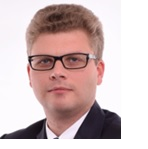
Title: Zero-emission Road Transport in Poland on the Example of Passenger Cars
Speaker
Dr. Mariusz Trela
AGH University of Krakow
Poland
Abstract
Zero-emission road transport is developing dynamically around the world, as the governments of many countries support its development. The Member States of the European Union, including Poland, are obliged to fulfill the accepted commitments, including those regarding the reduction of road transport emissions, which is part of the policy of supporting zero-emission transport. However, it should be noted that the environmental benefit of introducing electric cars significantly depends on the energy mix used to produce electricity by each country. The article presents analyzes of pollutant emissions corresponding to the operation of electric, gasoline and diesel-powered passenger cars in Poland. Conclusions were drawn regarding the environmental benefits of operating different types of passenger cars on the example of Poland.
Biography
Dr. Mariusz Trela has completed his PhD from the Faculty of Management, AGH University of Krakow, Poland. He has been working as an Assistant Professor at theAGH University of Krakow since 2000. He conducts research on transport and environmental protection. He has published more than 30 papers in journals.
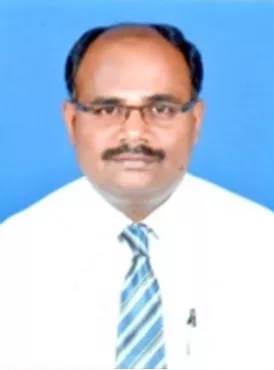
Title: Geographic Information System (GIS)-Based Interactive Decision Support Projection Model for the Agriculture System in India
Keynote Speaker
Dr. Basavarajaiah D.M
Karnataka Veterinary Animal and Fisheries Sciences University (B), India
Abstract
Due to increasing food demands, high rates of population growth (2% per annum) and major changes in political, economic and social fragmentation, the agriculture system will be deprived. In the interest of sustainability, we should develop and revise many existing agricultural policies. In this regard, the estimation of likelihoods is very essential for the revision of cropping patterns. Since statistical techniques are very important for the development of separate algorithms by considering large parameters that are collected from lab to field, Now, more than ever, decision-makers at all levels need an increasing amount of information to help them understand the possible outcomes of their decisions and the development of newer systems. We have formulated a user-friendly decision-support GIS-based interactive model with greater accuracy to manage the existing agricultural management system; our fitted model will be very useful for agriculture scientists, meteorologists and policymakers to make the right decisions at the right time for the projection and implementation of a new agricultural system.
Biography
Dr. Basavarajaiah D.M working as an Associate Professor and Head , Department of Statistics and Computer Science, Dairy Science College, Karnataka Veterinary Animal and Fisheries Sciences University (B), Hebbal, Bangalore. My area of research heeds Statistical theory, Statistical modelling on high dimensional datasets of Agriculture, Engineering, Medicine, Veterinary and animal Sciences. Penned sixty eight research articles and five academic books. Serving as an editorial Board Member and Scientific Board advisor of Various International indexed journals. Life Member of various academic organizations. Honoured several accolades for my academic and research Excellency “Chartered Scientist award stalwart by Science Council, United Kingdom in Collaboration with Royal Statistical Society. Best Reviewer award -2016 ‘TRANS STELLAR’ Journal Publications and Research Consultancy ,TJPRC Ltd., (NAAS rated Journals), Fellow of Royal Statistical Society ,UK (London), Fellow of Mathematical Society ,UK (London), Bharathshikshratana and Indo-Dubai Achiever’s Pacific award honoured by Global Society of health and educational growth new Delhi, Best reviewer -2015, Best scientific Board advisor - 2016 and Best editorial Board Member awards bestowed by International academy of Engineering Science and Technology (IASET),USA.
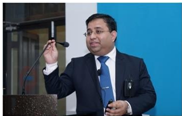
Title: Technology Driven Supply Chain Management in this Era
Keynote Speaker
Prof. Md. Mamun Habib
Independent University, Bangladesh University of Texas-Arlington, USA
Abstract
This lecture would demonstrate basic supply chain management for the manufacturing and service inductry, the latest technological advancements in those industry. Various business strategy, particularly responsiveness (quick response, and high quality) and efficient (cost effectiveness) supply chain strategy would be highlighted. The applications of advanced technology, including Artificial Intelligence (AI), Automation, machine learning, clooud computing, Blockchain, Bigdata, Internet of Things (IoT), Industrial Revolution (IR) 4.0, etc. would be discussed. Finally, the lecture would emphasize on technology focused supply chain management in the various industries to improve the operations and better outcomes in the post pandemic era. This lecture will be interactive and tailored to the interests of those attending.
Biography
Prof. Dr. Md. Mamun Habib is a Professor at the School of Business & Entrepreneurship (SBE), Independent University, Bangladesh (IUB). Dr. Habib is the Visiting Scientist at the Dept. of Industrial Engineering of the University of Texas – Arlington, USA. He is also the Visiting Professor at Unirazak, Malaysia and UCSI, Malaysia, PUP, Philippines. At present, he is supervising twelve (12) Ph.D. scholars locally and internationally and earlier five (5) Ph.D. scholars have graduated. As a Ph.D. examiner, he has several Ph.D. involvements with UUM, UNIRAZAK, AIMST, UNITAR, Asia e University (AeU), Universiti Selangor (UNISEL), Universiti Putra Malaysia, Malaysia; Assumption University of Thailand; Institute for Technology and Management (ITM) – University, Birla Institute of Technology (BIT)–Deemed University, National Institute of Technology (NIT), SOA University, Chitkara University, Aligarh Muslim University, India; University of the Assumption, Philippines. He has about 22 years of experience in the field of teaching, training, workshop, consultancy, and research. Dr. Habib published more than 200 research papers, including Conference Proceedings, Journal articles, and book chapters/books. Among them, about 75 articles are WoS and Scopus Indexed. He is the Editor-in-Chief of the International Journal of Supply Chain Management (IJSCM), UK, and the International Supply Chain Technology Journal (ISCTJ), USA. He serves as the Editor-in-Chief/Lead Guest Editor/Editor/Editorial Board Member/Reviewer of more than 60 journals, particularly Elsevier (Scopus) and Thomson Reuters (Web of Science) Indexed Journals. As a Keynote Speaker, he delivers lectures more than 80 international conferences at various countries, particularly USA, UK, Taiwan, China, Indonesia, Malaysia, Thailand, Singapore, Turkey, Korea, India, Philippines, Greece, Bulgaria, Australia, Italy, Nigeria etc. He conducted more than 200 Webinar/Workshops/ Seminars locally and internationally. He is involved in a few grant research projects in the USA, Malaysia, Thailand, Bulgaria, European Union, India, and Bangladesh. He is a lead trainer at the Chartered Institute of Logistics and Transport (CILT) International, UK. Earlier he was affiliated with BRAC University, Bangladesh; UNITAR International University, Malaysia; Universiti Utara Malaysia (UUM), American International University-Bangladesh (AIUB), Assumption University, Thailand. He accomplished his Ph.D. and M.S. with outstanding performance in Computer & Engineering Management (CEM) under the Graduate School of Business (GSB) from Assumption University, Thailand. His Ph.D. research was in the field of Supply Chain Management. His core research areas are supply chain management, production & operations management, operations research, research methodology, engineering/technology management, and educational management. He is an active member of different professional organizations, including IEEE (Senior Member); Chartered Fellow (FCILT), CILT International, UK; IEOM (President, SCM Technical Division); BSPUA (V.P, R & I); IETI (Senior Member and Board of Director); IRED (Fellow); GRDS (Vice-President) just to name a few. He also serves as General Chair, Program Chair, Technical Chair, Organizing Committee Member, Technical Committee Member, Track Chair, Session Chair as well as Reviewer of numerous international conferences. Finally, he is involved with QS World University Ranking/Times Higher Education Ranking as an academician.
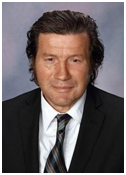
Title: Smart Tomorrow driven by Ultra Smart Computing
Plenary Speaker
Prof. Dr. Eduard Babulak
National Science Foundation, United States
Abstract
Given the current dynamic developments in the field of Semiconductors, Very Large Scale Integration, New Materials, AI, Smart Medicine, and Humanoid Robotics, with the ubiquitous access to high-speed Internet 24/7, the Ultra-smart Cyberspace is becomingreality. The Smart Computational Systemsare collecting, processing and analyzing a real-time medical data utilizing the Electronic Health Record (EHR) to fast treatment, prevention and healing of thewave of new viruses and diseases and ultimately safe human lives.
The areas of research in the field of Microelectronics, Computing and AI & Humanoid Robotics create a new platform for future e-Health utilizing new biomechanical humanoid devices. In light of currently ongoing developments of Covid-19 crisis, having effective real-time application of Ultra-smart Cyberspace, with applied AI &Robotics and Big Data will support criticallive saving surgeriesin Next generation tele-Medicine.
Due to Covid-19, the humanity lives in the most dramatic times, yet despite of its most negative impact it does also inspire dynamicinnovation, research and developments in the world of health,business, government, industry, plus., while promoting seamless creation of multidisciplinary teams of experts in the nation and worldwide.
The author discuss the current and future dynamic trends in research, innovation and developments of Electronics, Semiconductor & VLSI, New Materials, AI, Smart Health, and cutting-edge Humanoid Robotics that would provide supportto save lives and to make best real-time decisions worldwide.
Biography
Prof. Dr. Eduard Babulak is an accomplished international scholar, researcher, consultant, educator, professional engineer, and polyglot, with more than thirty years of experience. He served as successfully published and his research was cited by scholars all over the world. He serves as Chair of the IEEE Vancouver Ethics, Professional and Conference Committee. He was Invited Speaker at the University of Cambridge, MIT, Purdue Speaker Photo University, Yokohama National University and University of Electro Communications in Tokyo, Japan, Shanghai Jiao Tong University, Sungkyunkwan University in Korea, Penn State in USA, Czech Technical University in Prague, University at West Indies, Graz University of Technology, Austria, and other prestigious academic institutions worldwide. His academic and engineering work was recognized internationally by the Engineering Council in UK, the European Federation of Engineers and credited by the Ontario Society of Professional Engineers and APEG in British Columbia in Canada. He was awarded higher postdoctoral degree DOCENT – Doctor of Science (D.Sc.) in the Czech Republic, Ph.D., M.Sc., and High National Certificate (HNC) diplomas in the United Kingdom, as well as, the M.Sc., and B.Sc. diplomas in Electrical Engineering Slovakia. He serves as the Editor-in-Chief, Associate Editor-in-Chief, Co- Editor, and Guest-Editor. He speaks 16 languages and his biography was cited in the Cambridge Blue Book, Cambridge Index of Biographies, Stanford Who’s Who, and number of issues of Who’s Who in the World and America.

Title: Future Literacy: How to Shape a Sustainable and Inclusive Future
Speaker
Mrs. Judith van den Berg
STUDIO.WHY
Netherlands
Abstract
In today’s rapidly evolving world, navigating the uncertainty that the future holds, has become a daunting task. To deal with this uncertainty, we must understand it, and that’s where Futures Literacy (FL) comes into play. FL is a universal capability, much like reading and writing, that can be developed by everyone. It’s a skill that empowers us to understand the role the future plays in our decisions and actions.
UNESCO, the United Nations Educational, Scientific and Cultural Organization, has been promoting Futures Literacy worldwide. They work tirelessly to help individuals and communities understand the future better. After all, imagining possible futures isn’t a solitary exercise but a collective endeavor. As a tool, it improves our decision-making, enables us to be adaptable, and fosters an appreciation of diversity. Futures Literacy encourages us to move from unconscious anticipation of the future to a conscious and reflective state.
The future might seem uncertain and overwhelming, but with Futures Literacy, we can learn to understand it, navigate it, and even leverage it. This skill and the mindset it fosters, are not just critical for personal growth but are also essential in our collective journey towards a sustainable and inclusive future. As we continue to face challenges like climate change, pandemics, and social issues, the ability to imagine diverse futures can be our most potent tool. After all, the future isn’t something to fear; it’s something to shape.
Biography
Mrs. Judith van den Berg has completed her MBA in Business and Social Innovation from the University of Breda in The Netherlands. She has gained more than a decade of experience as a governmental policy advisor, taking on complex social challenges like Youth Participation. Currently she is an Innovation Professional at STUDIO.WHY, a cooperation that empowers a futureproof mindset. In this role she brings multidisciplinary teams together and equips them with skills and tools to boost innovation and creativity. She thrives at challenging the status quo to become resilient and adaptable to this crazy, fast-paced world we live in.

Title: Future-proofing Organizations for the AI Revolution Through Talent Development
Speaker
Dr. Colrain M. Zuppo
Zuppo Consulting
United States
Abstract
One of the most important inputs in technological forecasting is the human-machine partnership. Designing technical training and development requires a clear view of how we actually interact with technology versus a conceptualized view of the interaction, focusing solely on efficiency or effectiveness. The pace of change inherent in the unlearning/learning that will accompany today’s emerging technologies is rapidly accelerating through Artificial Intelligence (AI). Because AI is redefining how we work and live, the need to future-proof our organizations is more pressing than ever. Critical to that mission is the need to future-proof our talent.
Though fears of robots taking our jobs have long since been foretold via science fiction, the reality of how the AI revolution will affect the workforce will likely be quite different. Those who will be successful will be those who will have figured out how to harness and leverage the power of emerging technologies: specifically, AI. Organizations will be required to look deeper at their talent development efforts to facilitate the unique skills required for jobs that don’t yet exist. The power will truly lie within the people.
In this session, Dr. Zuppo will highlight the trends of the rapidly developing field of AI from a people perspective and explore the skillsets that will be required to maximize the many AI tools being released each day. Dr. Zuppo will also take a look at how today’s jobs will change as a result of the technology tools that continue to shape how we work and live.
Biography
Dr. Colrain (Cori) Zuppo earned her PhD in Technology Management from Indiana State University with a specialization in Human Resource Development and Industrial Training. Cori’s dissertation research was entitled “Organizations as consumers of human capital via technology: A policy study of information and communication technologies.” Dr. Zuppo also published “Defining ICT in a Boundaryless World: The Development of a Working Hierarchy” which has been used around the world to define ICT sectors, establishing a hierarchy of applications for the term ICT or ICTs. Cori also holds an M.A.Ed. from The George Washington University and B.S. in Conflict Resolution from Ohio University. Cori holds professional certifications of SHRM-SCP (Senior Certified Professional in HRM), Senior Professional in Human Resources (SPHR) and Global Professional in Human Resources (GPHR). Dr. Zuppo consults in the areas of technology management/forecasting, HRM, HRD, organization development, employee and labor relations, strategic organizational communication, and instructional design.
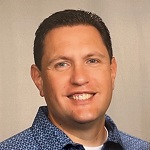
Title: Revolutionizing Quantum Mechanics: The McGinty Equation and its Potential Impact on the Understanding of the Universe
Keynote Speaker
Dr. Chris McGinty
CEO & Founder
United States
Abstract
The McGinty equation is a novel approach to solving quantum mechanical problems that combines traditional Quantum Field Theory (QFT) with fractal geometry. This equation provides a new perspective on the study of quantum mechanics and has the potential to bridge the gap between the theoretical framework of quantum mechanics and the physical reality of our world. In this presentation, we will provide concrete examples of the practical applications of the McGinty equation, including its use in modeling the behavior of particles in scattering experiments and Casimir force calculations. The integration of QFT and fractal geometry in the McGinty equation is also supported by the observation of the universe being fractal at a cosmic scale. We will explain the implications of the McGinty equation in layman's terms, including its potential for the development of more powerful and efficient quantum computers, with implications for cryptography, drug discovery, and materials science. The presentation will provide context for the development of the McGinty equation and its place in the broader field of quantum mechanics, including the limitations of traditional QFT and the need for new approaches to understanding the behavior of subatomic particles. Ultimately, the McGinty equation could provide a deeper understanding of subatomic particles and their interactions, leading to new discoveries, applications, and technologies. Its integration of QFT and fractal geometry could also provide a new perspective on the nature of the universe and its inner workings, further expanding our understanding of the fundamental principles of the cosmos.
Biography
Will be updated soon!
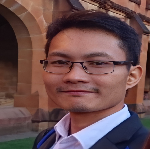
Title: Structural Modeling of Offshore Wind Turbine in Ocean Engineering
Speaker
Dr. Tien Anh Tran
Seoul National University
South Korea
Abstract
The structural health monitoring is a keyword to conduct this study in the civil engineering and the ocean engineering. The offshore wind turbine generation is a topic that there are a lot of scholars/researchers in the world to conduct the studies related to monitor and evaluate its operation on the ocean environmental condition. Since this device is a potential resouce from the oceangraphy to generate the clean energy which could be alternated the traditional marine fuels nowadays. It could be used for the offshore vehicles on the urban transportation system at some countries in the world nowadays. Especially, the clean energy is crucial to decrease and restrict the exhaust gases emission from the industrial activites and the global warming potential nowadays. So, the study on the offshore wind turbine is very significant to utilize on the renewbale energy technology and the ocean engineering. The structive modeling of offshore wind turbine will be presented in this study to understand why this device could operate reliably on the harsh environment condition by wind and wave action. The structive analysis will be studied through the physical-based model to explore the structure diagram.
Biography
Dr. Tien Anh Tran, a Research Fellow at Seoul National University, Seoul city, South Korea. He is an Assistant Professor (Lecturer) at Department of Marine Engineering, Vietnam Maritime University, Haiphong City, Vietnam. He is an Honorary Professor at School of Computing Science and Engineering, Galgotias University, India and an Honorary Adjunct Professor at School of Computer Science and Engineering, Lovely Professional University (LPU), India. He received B.Eng and M.Sc at Vietnam Maritime University, Vietnam in 2011 and 2014, respectively. He got Ph.D. Degree at Wuhan University of Technology, Wuhan, China in 2018. He is an Editor/Guest Editor for the reputation journals indexed in SCI/SCIE such as Environment, Development and Sustainability (SCIE, IF= 4.080), IET Intelligent Transport System (SCIE, IF = 2.568), International Journal of Distributed Sensor Networks (SCIE, IF = 1.938), Sustainable Computing: Informatics and Systems (SCIE, IF = 4.923), International Journal of Renewable Energy Technology, International Journal of Energy Optimization and Engineering (ESCI, Scopus), IEEE Internet of Things Magazine. In 2015, he had been awarded the Chinese Government Scholarship (CSC) for the full funding of Doctor of Philosophy (PhD) program in China. In 2019, He had been awarded the NEPTUNE prize for the outstanding researchers by Vietnam Maritime University, In 2022, he is one of five outstanding scientists in Vietnam to be nominated for Ta Quang Buu prize by the National Foundation for Science & Technology Development (NAFOSTED). Additionally, he had been selected and awarded the full scholarship for the Postdoctoral Fellowship Program of National Research Foundation (NRF) for Foreign Researchers by the Government of South Korea.

Title: Fermentation Based Nano Particles/Nano Formulations for Agriculture and Nano-Films for Enhancing the Shelf Life of Fruits and Vegetables
Speaker
Dr. Abhishek Mathur
Prathista Industries Limited
India
Abstract
Micro-organisms are having their unique nature to digest the complex compounds and convert the same into simplest units by their capability of production of enzymes and different natural molecules and metabolites. The microbes utilized in the form of Plant growth promoting rhizobacteria (PGPRs) play a vital role in maintaining soil fertility and plant health. The microbes residing in the soil are beneficial for the growth of crops in terms of vegetative and reproductive growth are known as plant growth promoting rhizobacteria (PGPRs). They can act as biofertilizers, pesticidal and insecticidal agents. Simultaneously, the PGPRs increase the resistance to biotic and abiotic stress. These are effective growth modulators for the crop as they secrete novel metabolites and growth molecules that enable the crop to sustain in adverse and stress conditions. These molecules also induce systemic resistance and anti- pathogeniceffect against the soil borne infections. Several substances produced by antagonistic rhizobacteria have been related to pathogen control and indirect promotion of growth in many plants, such as siderophores and antibiotics. The PGPRs (growth promoting action, pesticidal and insecticidal action) were found to have positive PGPR traits viz. IAA production, siderophores production, Cytokinin and HCN production. The molecules and secondary metabolites secreted by such PGPRs are beneficial in terms of growth promotion and defensive properties. These metabolites can be utilized further to synthesize nanoparticles after combination with in organic metallic ion. These fused nanoparticles are found to have more significant and beneficial aspects in agriculture. Nanoparticles are 100 mm or less, nanoparticles synthesize by a biogenic enzymatic process. Microorganisms such as bacteria, actinomycetes, and fungi play an important role in the treatment of toxic metal through reduction of metal ions and are considered as potential Nano factories. These microbes and their secondary metabolites are being used for the preparation of biogenic nanoparticles. These nanoparticles are very cost effective and are significant in terms of application potential. On the other hand, there is an effective need to protect the farm produce- fruits and vegetables by some natural and technology-based fusion of nanofilms that can protect the fruits and vegetables for extending their shelf life with maintaining the nutrition and quality of the same. The present study will identify and explore the effective solutions of “Nanotechnology” in agriculture and also in protecting the nutritive and shelf life of fruits and vegetables for a longer extent.
Biography
Dr. Abhishek Mathur is presently working as DGM (Incharge- Technical and R&D) in Prathista Industries Ltd., Telangana. He is Ph.D. in Biochemistry from National Institute of Malaria Research (ICMR), BHEL, Haridwar, Uttarakhand and Awarded from Jiwaji University, Gwalior (M.P), India. He has total experience of almost 18.5 years in the field of natural molecules and phytochemicals related to their food, pharmacological and agricultural activities. Life Member, Elsevier and Nature (Journals). Life Member, European Federation of Biotechnology (EFB), Europe. Life Member, ISEKI- Food Association, Austria. Life Member of Indian Science Congress, India. Life Member, Asian PGPR Society, USA. Fellow Member, Association of Plant Science Researchers (APSR), Dehradun. Fellow Member, Society for Plant Research (SPR), Vegetos, Springer. He strongly believes that, “Natural molecules are the future for tomorrow”, thus his scientific work emphasizes the importance of novel molecules, microbes, enzymes, and secondary metabolites for human and agricultural significance.
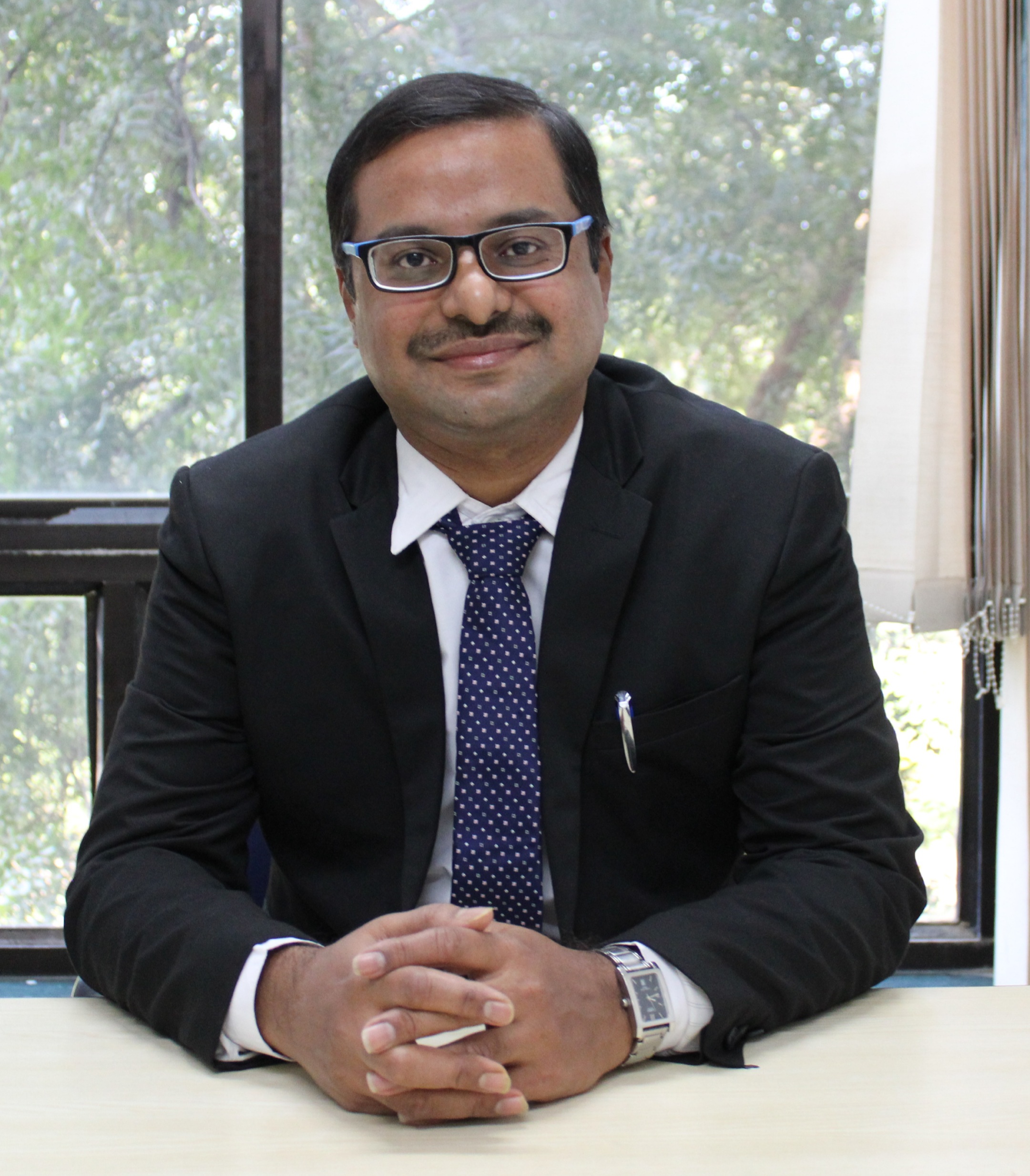
Title: Will be updated soon!
Keynote Speaker
Dr. Sailesh Iyer
Rai University
India
Abstract
Will be updated soon!
Biography
Dr. Sailesh Iyer has a Ph.D. (Computer Science) and currently serving as a Professor with Rai University, Ahmedabad. He has more than 22 years of experience in Academics, Industry and Corporate Training out of which 18 years are in core Academics. A hardcore Academician and Administrator, he has excelled in Corporate Training, Delivered Expert Talk in various AICTE sponsored STTP’s, FDP, Reputed Universities, Government organized Workshops, Orientation and Refresher Courses organized by HRDC, Gujarat University. Research Contribution include reputed Publications, Track Chair at ICDLAIR 2020 (Springer Italy), icSoftComp 2020, IEMIS 2020 (Springer), ICRITO 2020 (IEEE) and TPC Member of various reputed International and National Conferences, Reviewer of International Journals like Multimedia Tools and Applications (Springer), International Journal of Big Data Analytics in Healthcare (IGI Global),Journal of Renewable Energy and Environment etc., Expert Talk on Research based topics in various Universities and Conferences in addition to guiding Research Scholars as Supervisor. He has also been invited as a Judge for various events, Examiner for Reputed Universities, is a Computer Society of India Lifetime Member and also serving as Managing Committee (MC) Member, CSI Ahmedabad Chapter since last 2 years. Research interest areas include Computer Vision and Image Processing, Cyber Security, Data Mining and Analytics, Artificial Intelligence, Machine Learning.

Title: Deep Learning for Medical Imaging
Speaker
Dr. Gabriele Desimini
University of Amsterdam
Amsterdam
Abstract
Will be updated soon!
Biography
Dr. Gabriele Desimini is a machine Learning Engineer with an academic background in Computer and Automation Engineering at the Polytechnic University of Bari and in Artificial Intelligence at the University of Amsterdam. In the past, Gabriele has worked in Satellite testing, where he refined scientific, engineering and imaging skills.

Title: Generative AI for an Accelerated Digital Transformation Strategy
Speaker
Dr. Lobna Karoui
AI Exponential ThinkerUnited States
Abstract
Generative AI is a disruptive technology referring to a set of algorithms named Generative Adversarial Networks (GANs). Generative AI is a set of AI models that can generate a variety of content types such as text, images, voices, videos, products, piece of arts and even business models. It is used to solve business problems and provide a better respect of privacy. From experience with compagnies and researches, I can say that “Generative AI is the creation’s tool that makes machines express their imaginations”. Generative AI is applied to multiple use cases such as language traduction by using neural networks to generate a more accurate traduction compared to deeplearning. Generative AI is more than a hype or a Mythe, it’s a phenomenal reality. In less than six months, Tech companies and large corporates jump on this exponential area of AI by exploring its potential values for businesses and societies. In this talk, I will present a large perspective on the use of Generative AI in various sectors and how it’s accelerating the digital transformation strategy. Generative AI and LLM models are helping industries address and solve existant issues and embrace the power of such technologies. All big Tech companies are making this shift possible in a very rapid way thanks to the open LLM models trained on millions of parameters. Generative AI is still a scientific area in progress and we will address the various aspects that are should be tackeled to make it more efficient.
Biography
Dr. Lobna Karoui is a Tech Philanthropist, AI Strategist and Researcher in Education. She is a contributor at Forbes, MIT, Women Forum Economic & society and as a speaker at Harvard University, Stanford, Amazon, Bloomberg. Dr. Lobna Karoui is the President of AI Exponential Thinker with the mission to educate and empower 1 Million young people, horizon 2030, about TRUST Technologies, Artificial Intelligence Opportunities and the needed skills for the Future. As a researcher and podcast producer, she invites Exponential Thinkers from Google, WEF, Harvard to share their visions about the Future of Work and Education in this times of Exponential Technologies.

Title: Protecting Intellectual Property in the Marketing of Products and Services in the Space Industry
Speaker
Mr. José Godinho Uzcátegui
Kibs Eek
United States
Abstract
Protecting intellectual property in the marketing of products and services in the space industry.
Participation in the space sector has changed in recent decades. Previously, only a small number of states and even fewer companies could engage in activities in outer space. However, the democratization of access to space and the emergence of new space has opened up outer space to anyone who dreams of reaching it.
The changes that he has brought about are diverse, but in this opportunity, we will focus on those related to the protection of intellectual and industrial property rights and their commercialization. Developing or improving a product is complex, but commercializing it optimally and safely is even more complex. To achieve this, it is necessary to pay due attention to the protection of intangible rights that apply to any invention or innovation.
Moreover, beyond these two factors, there are numerous marketable elements that are often gounnoticed, such as databases, formulas, recipes, processes, among others. In conclusion, considering the success of current space missions, success is achieved only in projects that can face the complexities of the space sector through the proper commercialization of products and services that arise from the main mission. That is, those that are obtained routinely during the development of a production service such as supplier data, formulas, processes, and customer lists, amongothers. Success lies in protecting and commercializing.
Biography
Mr. José Godinho Uzcátegui is a lawyer graduated from the Universidad Bicentenaria de Aragua – Venezuela, a content developer in space law and policy, NPoC of Space Generation, RC of Space Generation, NPoC of World Space Week in Venezuela, a member of KibsEek, a company dedicated to the space sector, a drafter of the draft law “Draft Law on Space and Educational Activities” in Venezuela, and Executive Secretary in the CT54 – Aerospace committee, responsable for developing COVENIN (ISO) standards in Venezuela on aerospace issues. He is also the author of the research paper: Limitations of International Law Standards on the Autonomy of Outer SpaceLaw and a panelist and organizer of various space-related forums.
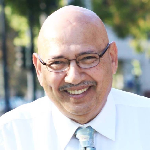
Title: System and Application Software are Obsoletes. What is Next: Fayad s Unified Software Engine (FUSE)
Plenary Speaker
Prof. Dr. M.E. Fayad
San Jose State University, United States
Abstract
A fuse is a standard device found in any electrical system. Examples include a home, an automobile, a power tool, and many more. The fuse itself is typical and comes in a relatively small number of variants about the required application and the amperage or load the fuse is expected to carry. For a particular application and load, fuses are typically interchangeable. If the FUSE fails, the circuit is open and will not conduct electricity. Plug in a new fuse, and the circuit is complete and resumes operation.
How many software programs are there in the world? Joseph Newcomer, Former Chief Software Architect (1987–2010) and Author have 14.7K replies and 3.7M answer views. Billions. Probably not trillions. But certainly, more than hundreds of millions. Some are one line long. Some are a hundred million lines long.
These software programs have insidious problems, such as Lack of reliability; Lack of stability/unstable; Excessively costly (billions) to build, purchase and operate; Brittle; Software projects that continue to fail at an alarming rate; hardware dependency; maintenance nightmare; and others.
The Ultimate Alternative is Fayad's Unified Software Engine (FUSE).
1) Capture the art, science, and engineering of the engine; 2) Capture and develop the engine's unified and stable functional and non-functional requirements; 3) Develop the ultimate design and unified software architecture on-demand of the engine; 4) The new and improved next generation of solutions; 5) Built on any common core infrastructure, e.g., SaaS infrastructures; 6) Facilitate on-demand, highly reusable architectures and applications with rapid times and open space to the market, starting from requirements to final product delivery; 7) Incorporating qualities such as scalability, adaptability, maintainability, unlimited reuse and applicability, and many more; 8) Stop building instance-oriented systems and reinventing the wheels; 9) Prevent hardware dependencies, and others
Biography
Professor Dr. M.E. Fayad is Full Professor at SJSU and a Founder and CEO at AITG, Aeeh Press, and i-SOLE. Previously, he was J.D. Edwards's professor of Software Engineering in the Department of Computer Science & Engineering at the University of Nebraska, Lincoln, from 1999 to 2002. Dr. Fayad is a well-known and recognized authority in theory and the applications of Software Engineering, Linguistic Engineering, and the Art of Abstraction. Fayad's publications are in the very core archival journals and conferences in the field of software engineering. Dr. Fayad was a guest editor on 11 theme issues. Dr. Fayad has published more than 300 high-quality articles, which include profound and well-cited reports (more than 50 in number) in reputed journals, over 100 advanced articles in refereed conferences, more than 25 well-received and cited journal columns, 16 blogged columns, 11 well-cited theme issues in prestigious journals and flagship magazines, 24 different workshops in very respected conferences, over 125 tutorials, seminars, and short presentations in more than 25 States in the USA since 1978 and 52 other countries. Dr. Fayad is also filling for eight new, valuable, and innovative patents and has developed over 800 stable software patterns and brought a breakthrough in software engineering. Dr. Fayad earned an MS and a Ph.D. in computer science and engineering from the University of Minnesota at Minneapolis. His research topic was OO Software Engineering: Problems and Perspectives. He is the lead author of several classic Wiley books, CRC, and Aeeh Press, Inc

Title: Exploring the Effectiveness of ChatGPT Subject-Specific, Class-Level Prompt Design, and Learning Material Integration Training for Educators: A Mixed-Methods Study
Speaker
Dr.Oga Chapwanya
United Kingdom
Abstract
Recent academic research has highlighted the increasing interest in artificial intelligence (AI), particularly Chatbots, due to the impressive capabilities of ChatGPT in various aspects of life. However, there is a lack of emphasis on training educators on how to use these tools. Specifically, there is a need for training in subject-specific and class-level prompt design, as well as integration of learning material to create a comprehensive and engaging learning experience for students. As ChatGPT continues to be implemented in the education sector, it is essential that teachers are trained on how to create and manage Chatbot conversations that are meaningful and relevant to the curriculum. This requires an understanding of the technology, as well as the ability to design prompts that are tailored to the subject being taught and the level of the class. Furthermore, educators must be equipped with the skills to integrate ChatGPT into lesson plans and learning materials, such as textbooks and digital resources. By training education staff on how to effectively use ChatGPT, students can benefit from a more personalized and interactive learning experience. To achieve this, teacher training programs should include modules on Chatbot design, prompt creation, and learning material integration. Additionally, there is a need for ongoing professional development opportunities to keep educators up to date with the latest advancements in the field. Ultimately, training education staff on the integration of ChatGPT in the classroom can improve the quality of education and prepare students for the technological advancements of the future.
Biography
Dr.Oga Chapwanya served in various roles ranging from learning facilitator to university lecturer in Zimbabwe.Throughout his career, he has shared knowledge in written articles and presentations.He held the position of Director of Marketing in a Zimbabwean NGO and has a strong passion for artificial intelligence (AI). He is highly respected in the education sector and is known for his engaging and interactive teaching style, which encourages students to participate actively in class discussions and debates. Currently he is conducting postgraduate researchin the United Kingdom.

Title: Examining the Effects of Sirtinol on Bud Development and Detachment in Hydra Viridissima
Speaker
Ms. Ayda Alibeigloo
McMaster University
Canada
Abstract
Hydra is a small freshwater cnidarian that has been the subject of scientific investigation for centuries due to its remarkable regenerative capabilities. One of its most striking features is its ability to undergo budding, a process by which a new individual arises from a bud-like outgrowth on the body of the parent organism and the process involves the coordinated proliferation, differentiation, and patterning of different cell types. Sirtinol is an epigenetic inhibitor of sirtuin deacetylases (class III HDACs) which has been shown to disrupt processes such as proliferation and differentiation. Hydra was exposed to Sirtinol, and the stages of bud developmentand detachment were scored. The morphological state of the parent Hydra wasalso scored. It was hypothesized that an epigenetic inhibitor disrupts Hydra bud development and detachment processes. Further research must be done to study the connection of epigenetic inhibitor Sirtinol to specific processes such as cell proliferation, regeneration processes, and differentiation in budding Hydra.
Biography
Ms. Ayda Alibeigloo is completing her undergrade at the Department of Life Sciences, University of McMaster, Canada. She is working under the supervision of Dr.Veronica Rodriguez Moncalvo, and Dr. Ana Campos at McMaster University, Canada.
“ Will be updated soon...”
+91 9491 456 452
Door No.200, Immidhihalli Main Road, Whitefield-560066, Bangalore, India
About Us
Global Scientific Guild organizes conferences and webinars to promote quality research and real world impact in an atmosphere of true international co-operation between scientists, doctors, professors, practitioners, engineers and industry by bringing together the world class renowned personalities to discuss the latest developments and innovations at one common platform.